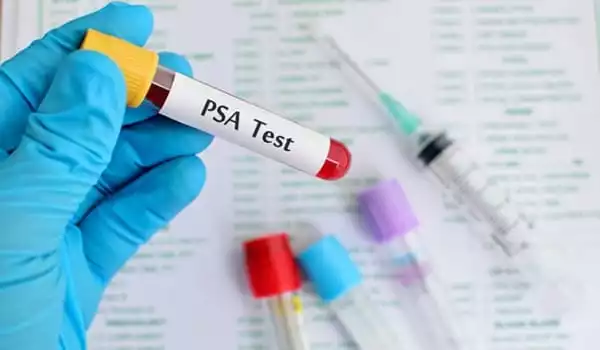A prostate biopsy is the most accurate diagnostic for detecting prostate cancer. This biopsy entails extracting a tissue sample from the prostate and studying it under a microscope to evaluate whether there is uncontrolled cell growth in the prostate gland.
To take a tissue sample during a prostate biopsy, your doctor inserts a thin needle into your prostate while using magnetic resonance imaging (MRI) and/or a transrectal ultrasonography TRUS). The tissue is subsequently tested in a lab for cancer cells. Your doctor may implant the biopsy needle through your rectum (transrectal biopsy) or the skin between your scrotum and anus (interscrotal biopsy) (transperineal biopsy).
According to a validation research including over 1,500 patients, a urine test could have saved one-third of needless prostate cancer biopsies while missing only a tiny proportion of tumors.
According to a validation study including more than 1,500 patients, a urine test based on University of Michigan Rogel Cancer Center research could have saved one-third of unnecessary prostate cancer biopsies while missing only a tiny number of tumors. The findings will be published in the March issue of the Journal of Urology.
LynxDX, a U-M startup company, is commercializing the MyProstateScore test, which evaluates levels of cancer-specific genes in a patient’s urine. It is based on research from the University of Michigan that revealed that 50% of all prostate tumors had a genetic abnormality in which the genes TMPRSS2 and ERG move on a chromosome and fuse together, producing an on-switch for prostate cancer development.
Our ultimate goal was to see if the MyProstateScore test could be a practical, reliable test that could eliminate the need for more expensive or invasive testing in men referred for a prostate biopsy.
Jeffrey Tosoian
A blood test for prostate-specific antigen, also known as the PSA test, is now one of the best tools available to clinicians for detecting prostate cancer. Although elevated PSA values may suggest cancer, the vast majority of men with elevated PSA levels do not have prostate cancer.
Men with an elevated PSA test undergo an invasive treatment called a transrectal biopsy to establish who has cancer and who does not. Patients experience discomfort during prostate biopsies, and there is a slight risk of complications. MRI scans are also used to identify prostate cancer, although they can miss malignant tumours and are far more expensive and scarce.
“Our ultimate goal was to see if the MyProstateScore test could be a practical, reliable test that could eliminate the need for more expensive or invasive testing in men referred for a prostate biopsy,” says study lead author Jeffrey Tosoian, M.D., M.P.H., a clinical lecturer in urology at Michigan Medicine.

A prostate biopsy is the only method to know for sure if you have prostate cancer and, if so, how aggressive it is. While prostate biopsies aren’t always decisive, they do provide men with the reassurance of knowing whether or not they have cancer. If you are aware that you have prostate cancer, you are more likely to receive adequate treatment.
Tosoian and two of his co-authors founded LynxDX and have a stake in the company. Not all prostate cancers are the same level of concern. Many appear later in life and grow so slowly that the best course of action is just to keep an eye on them. It is patients with these slow growing cancers or no cancer who, despite elevated PSA levels, could be spared from the more invasive or expensive procedures if doctors had better tests, the researchers say.
Patients seen at academic health facilities and community health settings were included in the validation research. Among the 1,525 patients, 338 (22%) had tumors found on biopsy that were group grade 2 or above, indicating that they were dangerous enough to require rapid treatment.
The study discovered that if the MyProstateScore test had been available to patients in the trial, 387 biopsies that revealed no cancer or slow-growing cancer could have been avoided. Meanwhile, the test would have missed only ten clinically severe tumors that required rapid treatment.
“The statistics demonstrate that this simple, secondary testing strategy could reduce the utilization of more expensive and invasive procedures after a PSA test,” Tosoian says.
















